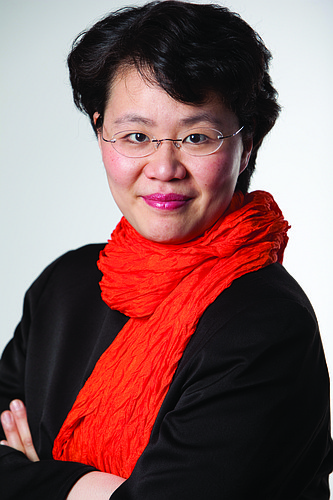- November 25, 2024
-
-
Loading

Loading

The Sarasota Orchestra played a program this past weekend filled with so much color, it was like visiting the Louvre. And, although the title of the series was “Exotic Stories,” it was more like pictures at an exhibition. Our tour was conducted by Mei-Ann Chen, who returned to the Sarasota Orchestra’s podium for the first time since her initial appearance here a couple of years ago.
The first gallery was brimming with oriental art and featured a five-minute work by the prolific Chinese-Canadian composer, An-Lun Huang. Although he’s not yet that well known in the West, Huang has written 20 symphonies and almost a dozen operas. His “Saibei Dance,” which is a brief but energetic segment from his “Saibei Suite” No. 2, sounds like Bizet and Borodin meeting on the Steppes of Central Asia. It’s picturesque, exciting and the perfect overture to introduce the colorful work that followed on our musical exhibition.
Maurice Ravel was, along with his other French friends of the Impressionist period, the Claude Monet of the music world. His piano concerto in G major is filled with intriguing overlays of color that have both Asian and American influences. Jean-Philippe Collard, the soloist in the work, tinted the music with textures from crystalline tinkles to percussive, hard-driving strokes, while Chen sensitively sculpted orchestral responses. From the opening clap of the slap-stick to the Gershwinesque melodies of the first movement, Chen and Collard dug into the brilliant colors Ravel wove to give us an exhilarating reading of the outer movements.
The adagio section was like a wash of oil paints Monet might have used to make an aural painting of his water lilies. Gentle but seductive, Collard was both soloist and accompanist as Ravel’s pianistic sounds enhanced the solos in the orchestra. Jerome Robbins knew what he was doing when he turned this great piano concerto into a ballet and Collard, with Chen, danced it beautifully.
The third, and final, gallery of art took us to Sinbad’s sea and the old festivals of Baghdad as Rimsky-Korsakov portrayed the tale of “Scheherazade” in the guise of a concerto for orchestra. Pacing plays an important role in storytelling, and Scheherazade bet her life on her abilities to charm, seduce and entertain the Sultan, who threatened to kill her unless she kept him diverted.
The composer gave every instrument in the orchestra a chance to weave a spell, and Chen, an animated conductor, knows how to pull musical colors from the orchestra without getting in the way of what the composer intended. Daniel Jordan’s superb reading of the violin solos made for some of the finest, lushest playing he’s done.
“Scheherazade” may be a brilliant piece of program music, but it’s even more of a concerto; it puts the spotlight on almost every principal player in the orchestra, and, if we had the space in this column, we’d name every name. The playing was sensational, and Chen gave solo bows to every principal, followed by a nod to entire sections at the conclusion of the performance. The tumultuous, rock star ovation at the end, was certainly deserved.